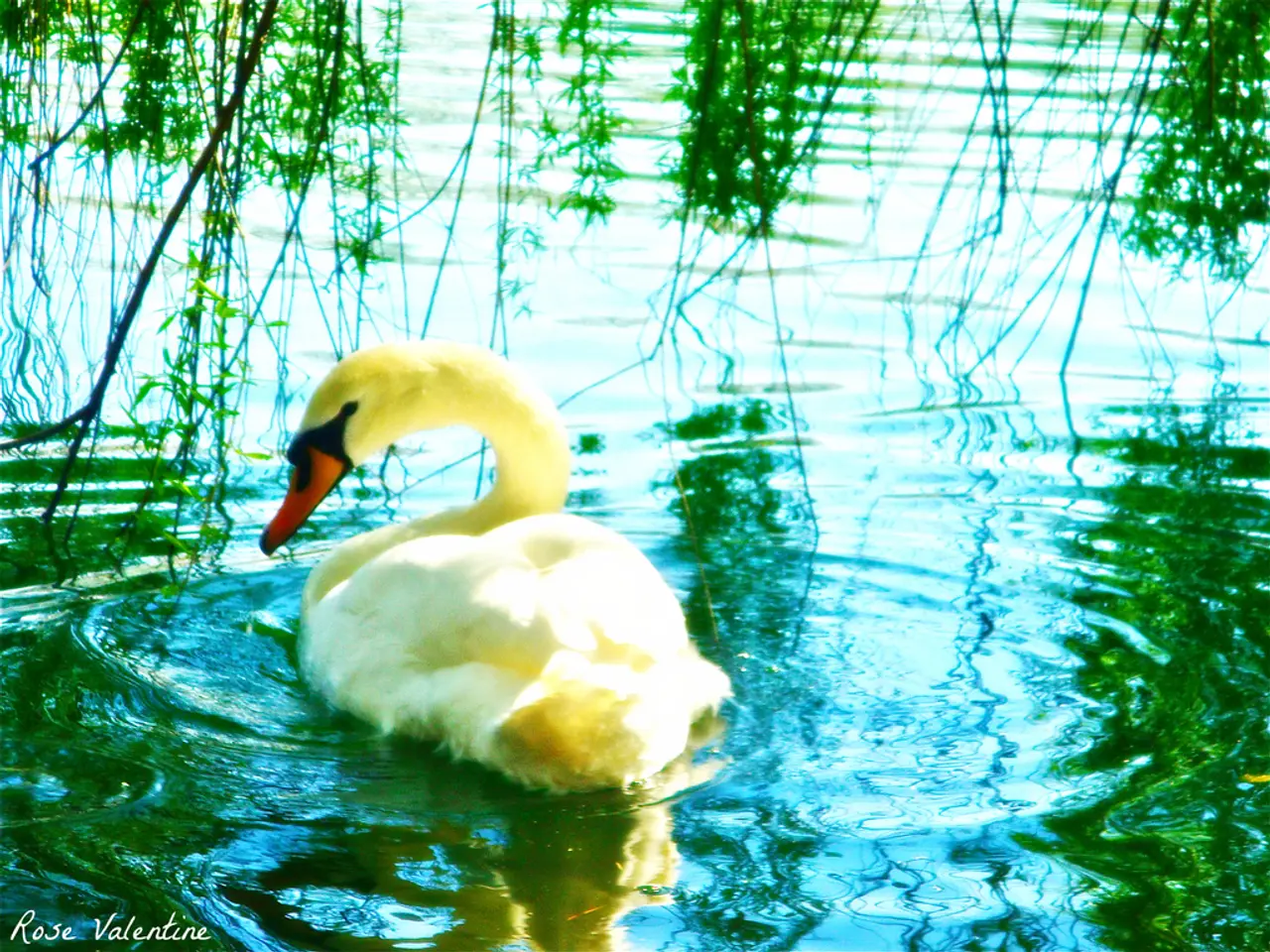Kiwi species with small, speckled plumage remains at risk
In the heart of New Zealand's diverse wildlife, the little spotted kiwi (Apteryx owenii) faces significant challenges due to its limited genetic diversity and vulnerability to threats. Historically, the species experienced a drastic decline, leading to very low genetic diversity, a consequence of near-extinction in the wild and subsequent re-establishment from a very small founding population. This genetic bottleneck reduces the species' ability to adapt to environmental changes and increases susceptibility to diseases and inbreeding depression.
The little spotted kiwi's small size further exposes it to predation and environmental stresses, complicating recovery efforts. Vulnerability to introduced mammalian predators such as stoats, cats, and ferrets remains critical, although predator control on predator-free islands has allowed some populations to survive.
Conservation programs have focused on translocating the little spotted kiwi to predator-free offshore islands, such as Motuihe Island, where populations can breed safely and are protected from mammalian predators. Continuous monitoring and predator control support the survival of the species in both islands and some mainland sanctuaries. Genetic management and breeding programs aim to maintain and possibly enhance diversity through careful translocations and population monitoring.
Public awareness and involvement, including indigenous Māori guardianship roles, help bolster conservation efforts culturally and socially. Intriguingly, the little spotted kiwi population on Long Island has not received genetic contribution from D'Urville Island birds, appearing to have arisen from a single mating pair from Kapiti.
While the little spotted kiwi benefits from predator-free habitats and active conservation translocations, maintaining and restoring its genetic diversity remains a long-term challenge. Ongoing management efforts target protecting existing genetic stocks and expanding populations in secure habitats to ensure resilience into the future.
Recent discoveries shed light on the little spotted kiwi's unique vocal behaviours. For instance, Dr Digby is investigating the possibility of little spotted kiwi having a call signature for individual identification. Moreover, male and female little spotted kiwi can synchronise their calls and have complementary call frequencies, making them more effective at repelling intruders.
In July 2025, a pair of little spotted kiwi were found on New Zealand's mainland for the first time in 50 years, which could help extend the genetic diversity of this species. Research into the little spotted kiwi led by a separate Victoria University team has been completed over a period of 3 years. This research revealed that the little spotted kiwi population, previously believed to only survive in offshore islands and fenced predator-free sites, has been found on the mainland.
These combined efforts exemplify focused conservation tackling habitat security and genetic diversity to safeguard New Zealand’s treasured little spotted kiwi. However, the threats posed by low genetic diversity and vulnerability to diseases and environmental stresses necessitate continuous monitoring and adaptive management strategies to ensure the long-term persistence of this remarkable species.
[References: 1] Population genetics. (n.d.). Retrieved from https://www.nature.com/articles/s41598-020-67773-z [2] Exploring genetic variation. (n.d.). Retrieved from https://www.genetics.org/content/207/4/1351 [3] The little spotted kiwi. (n.d.). Retrieved from https://www.doc.govt.nz/nature/native-animals/birds/kiwi/species/little-spotted-kiwi/ [4] Low genetic diversity among little spotted kiwi poses a threat to their long-term persistence. (n.d.). Retrieved from https://www.sciencedaily.com/releases/2020/07/200715132354.htm
- The conservation programs for the little spotted kiwi aim not only to protect the species from predators but also to address the long-term challenge of maintaining and restoring its genetic diversity, which is crucial for its health-and-wellness and ability to adapt to medical-conditions and environmental changes.
- The little spotted kiwi's vulnerability to diseases is intensified by its low genetic diversity, making it essential for ongoing management efforts to focus on protecting existing genetic stocks, expanding populations in secure habitats, and implementing adaptive strategies that take into account the science of genetic management.




